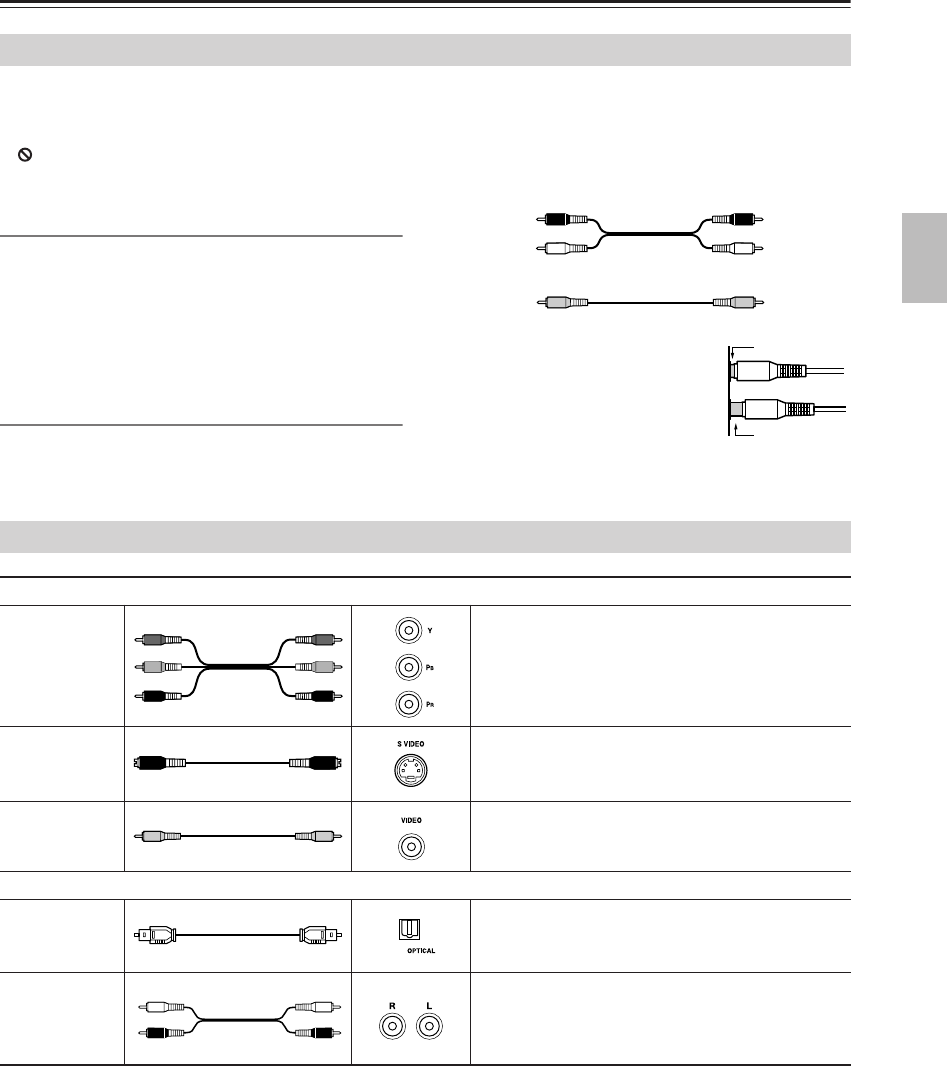
19
AV Cables and Connectors
• Read the manuals supplied with your AV components.
• Don’t connect the power cord until you’ve completed
all audio and video connections.
• Do not place objects on the unit as they may inter-
fere with proper ventilation.
Optical Digital Connectors
The DVD receiver’s optical digital connectors have a
shutter-type cover that opens when an optical plug is
inserted, and closes when it’s removed. Push the plug in
all the way.
Caution: To prevent shutter damage, hold the optical
plug straight when inserting and removing.
RCA AV Connection Color Coding
RCA AV connections are usually color coded: red,
white, and yellow. Use red plugs to connect right-chan-
nel audio inputs and outputs (typically labeled “R”). Use
white plugs to connect left-channel audio inputs and out-
puts (typically labeled “L”). And use yellow plugs to
connect composite video inputs and outputs.
The supplied AV cable is made up of an analog audio
cable and a composite video cable.
• Push each plug in all the way to
make a good connection (loose
connections can cause noise or
malfunctions).
• To prevent interference, keep
audio and video cables away from
power cords and speaker cables.
Before Making Any Connections
Right (red)
Left (white)
(Yellow)
Analog audio
Composite video
Right (red)
Left (white)
(Yellow)
Right!
Wrong!
AV Cables & Connectors
Video
Component
video
Component video separates the luminance (Y) and
color difference signals (P
R, PB), providing the best
picture quality. Some TV manufacturers label their
component video inputs differently.
S Video
S Video provides better picture quality than com-
posite video.
Composite
video
Composite video can be found on virtually all TVs,
VCRs, and video equipment.
Audio
Optical digital
Optical digital audio connections provide better
audio quality than analog connections.
Analog
RCA analog audio connectors can be found on vir-
tually all AV components.
C
R
C
B
Y
C
R
C
B
P
R
P
B
P/ /
//
R
P
B
Y


















